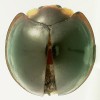 Since the publication of the Florida beetles checklist, a few ladybird beetles have become established in the state, some well-known and extensively documented and some little noticed and previously unreported. It is these latter species that are covered in this publication. All of the listed species are represented by voucher specimens in the Florida State Collection of Arthropods. Species previously known from Florida are reported by Frank and Mizell (2012) with emphasis on natural history. This 5-page fact sheet was written by Michael C. Thomas and Orland J. Blanchard, Jr., and published by the UF Department of Entomology and Nematology, October 2013.
Since the publication of the Florida beetles checklist, a few ladybird beetles have become established in the state, some well-known and extensively documented and some little noticed and previously unreported. It is these latter species that are covered in this publication. All of the listed species are represented by voucher specimens in the Florida State Collection of Arthropods. Species previously known from Florida are reported by Frank and Mizell (2012) with emphasis on natural history. This 5-page fact sheet was written by Michael C. Thomas and Orland J. Blanchard, Jr., and published by the UF Department of Entomology and Nematology, October 2013.
http://edis.ifas.ufl.edu/in1012
Tag: Entomology and Nematology Department
Woolly oak aphids Stegophylla brevirostris Quednau and Diphyllaphis microtrema Quednau (Insecta: Hemiptera: Aphididae)
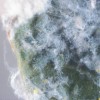 Woolly oak aphids are conspicuous pests on oak, because they are covered with large amounts of flocculent wax. Two genera of woolly oak aphids occur in Florida, each including one known native Florida species. One species, Stegophylla brevirostris Quednau, is common, and the other, Diphyllaphis microtrema Quednau, is rare. This 3-page fact sheet was written by Susan E. Halbert, and published by the UF Department of Entomology and Nematology, October 2013.
Woolly oak aphids are conspicuous pests on oak, because they are covered with large amounts of flocculent wax. Two genera of woolly oak aphids occur in Florida, each including one known native Florida species. One species, Stegophylla brevirostris Quednau, is common, and the other, Diphyllaphis microtrema Quednau, is rare. This 3-page fact sheet was written by Susan E. Halbert, and published by the UF Department of Entomology and Nematology, October 2013.
http://edis.ifas.ufl.edu/in1011
Integrated Pest Management in Protected Structures I: Basic Principles and Scouting
 The fundamentals of managing pests in protected structures are very similar in many respects to managing pests in field crops. But conditions within a protected structure can be modified to a certain degree to prevent, delay, or even mitigate pest issues. On the other hand, conditions that discourage one group of pests can often favor another. This 7-page fact sheet was written by Hugh A. Smith, Gary E. Vallad, and Bielinski M. Santos, and published by the UF Department of Entomology and Nematology, June 2013.
The fundamentals of managing pests in protected structures are very similar in many respects to managing pests in field crops. But conditions within a protected structure can be modified to a certain degree to prevent, delay, or even mitigate pest issues. On the other hand, conditions that discourage one group of pests can often favor another. This 7-page fact sheet was written by Hugh A. Smith, Gary E. Vallad, and Bielinski M. Santos, and published by the UF Department of Entomology and Nematology, June 2013.
http://edis.ifas.ufl.edu/in994
Spotted cucumber beetle Diabrotica undecimpunctata howardi Barber (Insecta: Coleoptera: Chrysomelidae)
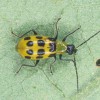 Spotted cucumber beetle is a major agricultural pest of North America. Another name for the spotted cucumber beetle is “southern corn rootworm”. Many Diabrotica species cause damage to field crops, especially corn, making these beetles a major agricultural concern. Because of the subterranean nature of their larvae, these insects are hard and expensive to control. This 6-page fact sheet was written by Harsimran Kaur Gill, Gaurav Goyal, and Jennifer Gillett-Kaufman, and published by the UF Department of Entomology and Nematology, September 2013.
Spotted cucumber beetle is a major agricultural pest of North America. Another name for the spotted cucumber beetle is “southern corn rootworm”. Many Diabrotica species cause damage to field crops, especially corn, making these beetles a major agricultural concern. Because of the subterranean nature of their larvae, these insects are hard and expensive to control. This 6-page fact sheet was written by Harsimran Kaur Gill, Gaurav Goyal, and Jennifer Gillett-Kaufman, and published by the UF Department of Entomology and Nematology, September 2013.
http://edis.ifas.ufl.edu/in1008
Overwintering Honey Bee Colonies in Northern Climates
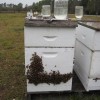 One of the many challenges beekeepers face is minimizing honey bee colony losses during winter. This can be especially challenging to beekeepers in extreme northerly climates. Special preparations must be made during the fall to ensure that colonies survive the winter months with minimal loss. This 3-page fact sheet was written by James D. Ellis and Katherine Hammons, and published by the UF Department of Entomology and Nematology, September 2013.
One of the many challenges beekeepers face is minimizing honey bee colony losses during winter. This can be especially challenging to beekeepers in extreme northerly climates. Special preparations must be made during the fall to ensure that colonies survive the winter months with minimal loss. This 3-page fact sheet was written by James D. Ellis and Katherine Hammons, and published by the UF Department of Entomology and Nematology, September 2013.
http://edis.ifas.ufl.edu/in1006
Rat lungworm Angiostrongylus cantonensis (Chen, 1935) (Nematoda: Strongylida: Metastrongylida)
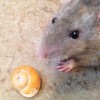 Like many pest and disease problems, rat lungworm has been slowly spreading around the world. First described by Chen from rats in China, the medical significance of this parasite was overlooked until 1944 when it was found infecting humans in Taiwan. Even then, because the report was published in Japanese, its importance remained largely unknown. In 1955, Mackerras and Sandars found this nematode among rats in Brisbane, Australia, and described its life cycle, including the importance of its molluscan intermediate hosts. This 4-page fact sheet was written by John Capinera and Heather S. Walden, and published by the UF Department of Entomology and Nematology, September 2013.
Like many pest and disease problems, rat lungworm has been slowly spreading around the world. First described by Chen from rats in China, the medical significance of this parasite was overlooked until 1944 when it was found infecting humans in Taiwan. Even then, because the report was published in Japanese, its importance remained largely unknown. In 1955, Mackerras and Sandars found this nematode among rats in Brisbane, Australia, and described its life cycle, including the importance of its molluscan intermediate hosts. This 4-page fact sheet was written by John Capinera and Heather S. Walden, and published by the UF Department of Entomology and Nematology, September 2013.
http://edis.ifas.ufl.edu/in1007
Eriophyid mite vector of Rose Rosette Disease (RRD) Phyllocoptes fructiphilus Keifer (Arachnida: Acari: Eriophyidae)
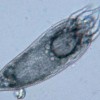 Phyllocoptes fructiphilus Keifer, a tiny eriophyid mite, is the vector of a devastating viral disease of roses called Rose Rosette Disease (RRD). This mite can be spread by the wind and by contaminated clothing and equipment. It also is possible that it can disperse through phoresy (attaching itself to insects). As a result, the distribution of the mite and RRD is expanding. This 5-page fact sheet was written by Marjorie Hoy, and published by the UF Department of Entomology and Nematology, May 2013.
Phyllocoptes fructiphilus Keifer, a tiny eriophyid mite, is the vector of a devastating viral disease of roses called Rose Rosette Disease (RRD). This mite can be spread by the wind and by contaminated clothing and equipment. It also is possible that it can disperse through phoresy (attaching itself to insects). As a result, the distribution of the mite and RRD is expanding. This 5-page fact sheet was written by Marjorie Hoy, and published by the UF Department of Entomology and Nematology, May 2013.
http://edis.ifas.ufl.edu/in999
Southern black widow Latrodectus mactans (Fabricius) (Arachnida: Araneae: Theridiidae)
 The Southern black widow spider, Latrodectus mactans (Fabricius), is a venomous spider found throughout the southeastern United States. Widow spiders received their name from the belief that they would kill and consume their mate following copulation. However, the practice was mainly observed in laboratory settings under crowded conditions. It is believed that sexual cannibalism within the widow species in natural settings is more associated with the male’s physical inability to escape rather than the female’s interest in consuming him. This 6-page fact sheet was written by Amanda Eiden and Phil E. Kaufman, and published by the UF Department of Entomology and Nematology, May 2013.
The Southern black widow spider, Latrodectus mactans (Fabricius), is a venomous spider found throughout the southeastern United States. Widow spiders received their name from the belief that they would kill and consume their mate following copulation. However, the practice was mainly observed in laboratory settings under crowded conditions. It is believed that sexual cannibalism within the widow species in natural settings is more associated with the male’s physical inability to escape rather than the female’s interest in consuming him. This 6-page fact sheet was written by Amanda Eiden and Phil E. Kaufman, and published by the UF Department of Entomology and Nematology, May 2013.
http://edis.ifas.ufl.edu/in1000
Rainbow scarab Phaneaus vindex Macleay (Insecta: Coleoptera: Scarabaeidae)
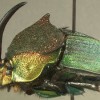 Rainbow scarabs are members of the beetle family Scarabaeidae, which along with the family Geotrupidae, are commonly known as dung beetles. Scarab beetles were the objects of worship in Ancient Egypt and the more spectacular varieties are made into jewelry. The genus Phanaeus MacLeay is distributed primarily in Neotropical habitats with 100 species, but also in the Neartic region with nine species and the West Indies with one. Dung beetles serve an important role in pasture ecosystems, which has resulted in their introduction around the world. The rainbow scarab has a bright exterior of metallic green, blue, and red interspersed with golden reflections. This 5-page fact sheet was written by Thomson Paris, Barukh Rohde, and Philip E. Kaufman, and published by the UF Department of Entomology and Nematology, July 2013.
Rainbow scarabs are members of the beetle family Scarabaeidae, which along with the family Geotrupidae, are commonly known as dung beetles. Scarab beetles were the objects of worship in Ancient Egypt and the more spectacular varieties are made into jewelry. The genus Phanaeus MacLeay is distributed primarily in Neotropical habitats with 100 species, but also in the Neartic region with nine species and the West Indies with one. Dung beetles serve an important role in pasture ecosystems, which has resulted in their introduction around the world. The rainbow scarab has a bright exterior of metallic green, blue, and red interspersed with golden reflections. This 5-page fact sheet was written by Thomson Paris, Barukh Rohde, and Philip E. Kaufman, and published by the UF Department of Entomology and Nematology, July 2013.
http://edis.ifas.ufl.edu/in1003
Natural Enemies of Rugose Spiraling Whitefly, Aleurodicus rugioperculatus Martin (Insecta: Hemiptera: Aleyrodidae) in the South Florida Landscape
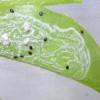 Rugose spiraling whitefly was first observed in south Florida in 2009. It has been found in 17 counties in south and central Florida. This whitefly has been reported on more than 60 plant species, which include gumbo limbo, coconut, black olive, avocado, Calophyllum spp., and giant white bird of paradise. This 6-page fact sheet describes the predators and parasitoids found feeding on this whitefly in the south Florida landscape. Written by Siavash Taravati, Catharine Mannion and Holly Glenn, and published by the UF Department of Entomology and Nematology, August 2013.
Rugose spiraling whitefly was first observed in south Florida in 2009. It has been found in 17 counties in south and central Florida. This whitefly has been reported on more than 60 plant species, which include gumbo limbo, coconut, black olive, avocado, Calophyllum spp., and giant white bird of paradise. This 6-page fact sheet describes the predators and parasitoids found feeding on this whitefly in the south Florida landscape. Written by Siavash Taravati, Catharine Mannion and Holly Glenn, and published by the UF Department of Entomology and Nematology, August 2013.
http://edis.ifas.ufl.edu/in1004
Swirski mite (suggested common name) Amblyseius swirskii Athias-Henriot (Arachnida: Mesostigmata: Phytoseiidae)
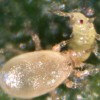 Amblyseius is a beneficial predatory mite endemic to the Eastern Mediterranean region. This species is considered a generalist predator, and readily consumes small soft-bodied pest species as well as pollen or plant exudates. Amblyseius swirskii has attracted substantial interest as a biological control agent of mites, thrips and whiteflies in greenhouse and nursery crops and is currently reared and sold commercially in Europe and North America for this purpose. This 5-page fact sheet was written by Mahmut Dogramaci, Garima Kakkar, Vivek Kumar, Jianjun Chen, and Steven Arthurs, and published by the UF Department of Entomology and Nematology, June 2013.
Amblyseius is a beneficial predatory mite endemic to the Eastern Mediterranean region. This species is considered a generalist predator, and readily consumes small soft-bodied pest species as well as pollen or plant exudates. Amblyseius swirskii has attracted substantial interest as a biological control agent of mites, thrips and whiteflies in greenhouse and nursery crops and is currently reared and sold commercially in Europe and North America for this purpose. This 5-page fact sheet was written by Mahmut Dogramaci, Garima Kakkar, Vivek Kumar, Jianjun Chen, and Steven Arthurs, and published by the UF Department of Entomology and Nematology, June 2013.
http://edis.ifas.ufl.edu/in1001
How To Buy Pest Control Services
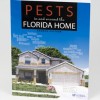 Pest control, like any kind of business, is a joint venture between the company and the customer. As with many businesses, customers may have difficulty judging whether they have received the most skilled efforts for their money. This 4-page fact sheet should help customers objectively look at the service they are buying to determine its merit. Written by P. G. Koehler, and published by the UF Department of Entomology and Nematology, July 2013. This fact sheet updates a chapter of SP134: Pests in and around the Florida Home, which is available from the IFAS Extension Bookstore.
Pest control, like any kind of business, is a joint venture between the company and the customer. As with many businesses, customers may have difficulty judging whether they have received the most skilled efforts for their money. This 4-page fact sheet should help customers objectively look at the service they are buying to determine its merit. Written by P. G. Koehler, and published by the UF Department of Entomology and Nematology, July 2013. This fact sheet updates a chapter of SP134: Pests in and around the Florida Home, which is available from the IFAS Extension Bookstore.
http://edis.ifas.ufl.edu/mg237
Seedcorn maggot, Delia platura (Meigen) (Insecta: Diptera: Anthomyiidae)
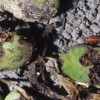 The seedcorn maggot is a polyphagous pest, affecting more than 40 different host plants. It is an important pest of germinating soybeans and corn, and also attacks a wide range of horticultural crops including beans, peas, cucumber, melon, onion, pepper, potato, and other vegetables. Seedcorn maggots damage newly planted seeds by feeding on seed contents, often leaving empty seed shells and preventing germination. Although usually no more than 2% of the seedlings get infested by this insect, 30% to 60% plant loss may occur in the field. This 5-page fact sheet was written by Harsimran Kaur Gill, Gaurav Goyal, and Jennifer L. Gillett-Kaufman, and published by the UF Department of Entomology and Nematology, July 2013.
The seedcorn maggot is a polyphagous pest, affecting more than 40 different host plants. It is an important pest of germinating soybeans and corn, and also attacks a wide range of horticultural crops including beans, peas, cucumber, melon, onion, pepper, potato, and other vegetables. Seedcorn maggots damage newly planted seeds by feeding on seed contents, often leaving empty seed shells and preventing germination. Although usually no more than 2% of the seedlings get infested by this insect, 30% to 60% plant loss may occur in the field. This 5-page fact sheet was written by Harsimran Kaur Gill, Gaurav Goyal, and Jennifer L. Gillett-Kaufman, and published by the UF Department of Entomology and Nematology, July 2013.
http://edis.ifas.ufl.edu/in1002
Granulate cutworm, Feltia subterranea (Fabricius) (Insecta: Lepidoptera: Noctuidae)
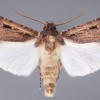 The granulate cutworm, Feltia subterranea (Fabricius) is the most commonly occurring cutworm in Florida, though it is rarely numerous enough to be a major pest. It is nocturnal through most of its life, and lacks distinctive features in the larval and adult stage, so it often is overlooked, and its activities and damage are not fully appreciated. This 4-page fact sheet was written by John L. Capinera, and published by the UF Department of Entomology and Nematology, May 2013.
The granulate cutworm, Feltia subterranea (Fabricius) is the most commonly occurring cutworm in Florida, though it is rarely numerous enough to be a major pest. It is nocturnal through most of its life, and lacks distinctive features in the larval and adult stage, so it often is overlooked, and its activities and damage are not fully appreciated. This 4-page fact sheet was written by John L. Capinera, and published by the UF Department of Entomology and Nematology, May 2013.
http://edis.ifas.ufl.edu/in997
Scarlet-bodied wasp moth, Cosmosoma myrodora (Dyar) (Insecta: Lepidoptera: Arctiidae)
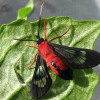 The scarlet-bodied wasp moth, Cosmosoma myrodora (Dyar), is a beautiful native insect. Because of its striking adult coloration, including a bright red thorax and abdomen, and transparent wings patterned with black, this moth immediately stands out in Florida landscapes. Larval feeding is restricted to two native plants in the genus Mikania, family Asteraceae. This 5-page fact sheet was written by Diego Moscoso, Rodrigo Diaz, and William A. Overholt, and published by the UF Department of Entomology and Nematology, May 2013.
The scarlet-bodied wasp moth, Cosmosoma myrodora (Dyar), is a beautiful native insect. Because of its striking adult coloration, including a bright red thorax and abdomen, and transparent wings patterned with black, this moth immediately stands out in Florida landscapes. Larval feeding is restricted to two native plants in the genus Mikania, family Asteraceae. This 5-page fact sheet was written by Diego Moscoso, Rodrigo Diaz, and William A. Overholt, and published by the UF Department of Entomology and Nematology, May 2013.
http://edis.ifas.ufl.edu/in996
Spotted Wing Drosophila: Pest Management Recommendations for Southeastern Blueberries
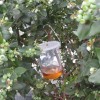 The spotted wing drosophila is a recently discovered invasive species native to parts of East Asia. It was first detected in the continental United States in California in 2008 and in Hillsborough County, Florida in 2009. Since then, the spotted wing drosophila has spread to over 28 counties in Florida. SWD is polyphagous, meaning it feeds on many different host plants, including most thin-skinned fruits. The major hosts of concern to the Florida agriculture industry are blueberries, strawberries, blackberries and grapes. This 5-page fact sheet was written by Oscar E. Liburd and Lindsy E. Iglesias, and published by the UF Department of Entomology and Nematology, June 2013.
The spotted wing drosophila is a recently discovered invasive species native to parts of East Asia. It was first detected in the continental United States in California in 2008 and in Hillsborough County, Florida in 2009. Since then, the spotted wing drosophila has spread to over 28 counties in Florida. SWD is polyphagous, meaning it feeds on many different host plants, including most thin-skinned fruits. The major hosts of concern to the Florida agriculture industry are blueberries, strawberries, blackberries and grapes. This 5-page fact sheet was written by Oscar E. Liburd and Lindsy E. Iglesias, and published by the UF Department of Entomology and Nematology, June 2013.
http://edis.ifas.ufl.edu/in998
Olive shootworm, Palpita persimilis Munroe (Insecta: Lepidoptera: Crambidae)
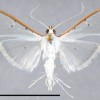 Palpita persimilis Munroe (Lepidoptera: Crambidae) is a defoliator of olives and privet in South America. Examination of specimens submitted to UF-IFAS and FDACS-DPI prompted the discovery that the species has been established in Florida for many years, having been confused with two similar native species. The confusion parallels historical misidentifications in Peru. To date, all vouchered specimens in Florida with host information were found feeding on leaves of Ligustrum japonicum Thunb. (Japanese privet). This 6-page fact sheet was written by James E. Hayden and Lyle J. Buss, and published by the UF Department of Entomology and Nematology, May 2013.
Palpita persimilis Munroe (Lepidoptera: Crambidae) is a defoliator of olives and privet in South America. Examination of specimens submitted to UF-IFAS and FDACS-DPI prompted the discovery that the species has been established in Florida for many years, having been confused with two similar native species. The confusion parallels historical misidentifications in Peru. To date, all vouchered specimens in Florida with host information were found feeding on leaves of Ligustrum japonicum Thunb. (Japanese privet). This 6-page fact sheet was written by James E. Hayden and Lyle J. Buss, and published by the UF Department of Entomology and Nematology, May 2013.
http://edis.ifas.ufl.edu/in995
The Asiatic garden beetle Maladera castanea (Arrow 1913) (Coleoptera: Scarabaeidae)
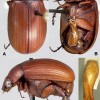 The Asiatic garden beetle has been a pest in the northeastern United States since the 1920s. Generally not as abundant or damaging as the Japanese beetle, this pest beetle is occasionally numerous enough to cause damage to turf, gardens and field crops, as well as simply being a nuisance. It’s discovery in Florida was not unexpected. This is the first report of this pest beetle in the lower southeastern U.S. coastal plain. This 3-page fact sheet was written by Paul E. Skelley, and published by the UF Department of Entomology and Nematology, April 2013.
The Asiatic garden beetle has been a pest in the northeastern United States since the 1920s. Generally not as abundant or damaging as the Japanese beetle, this pest beetle is occasionally numerous enough to cause damage to turf, gardens and field crops, as well as simply being a nuisance. It’s discovery in Florida was not unexpected. This is the first report of this pest beetle in the lower southeastern U.S. coastal plain. This 3-page fact sheet was written by Paul E. Skelley, and published by the UF Department of Entomology and Nematology, April 2013.
http://edis.ifas.ufl.edu/in992
Infant Botulism and Honey (ENY128/AA142)
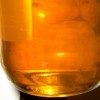 Since honey is a potential and avoidable source of Clostridium botulinum spores, the Center for Disease Control and Prevention, the American Academy of Pediatricsm and the National Honey Board recommend that honey not be given to infants younger than 12 months of age. Honey should not be added to water, food, or formula fed to infants under 12 months of age. This 2-page fact sheet was written by Malcolm T. Sanford, Eddie Atkinson, Jeanette Klopchin, and Jamie Ellis, and published by the UF Department of Entomology and Nematology, June 2013.
Since honey is a potential and avoidable source of Clostridium botulinum spores, the Center for Disease Control and Prevention, the American Academy of Pediatricsm and the National Honey Board recommend that honey not be given to infants younger than 12 months of age. Honey should not be added to water, food, or formula fed to infants under 12 months of age. This 2-page fact sheet was written by Malcolm T. Sanford, Eddie Atkinson, Jeanette Klopchin, and Jamie Ellis, and published by the UF Department of Entomology and Nematology, June 2013.
http://edis.ifas.ufl.edu/aa142
A Mealybug Phenacoccus multicerarii Granara de Willink (Hemiptera: Pseudococcidae) (EENY550/IN993)
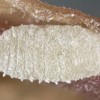 Florida Department of Agriculture and Consumer Services, Division of Plant Industry inspector Lisa Hassell collected the mealybug Phenacoccus multicerarii, a new continental record, from a retail nursery in Fernandina Beach (Nassau County, on 15 June 2011). On a return visit to the store, the mealybug was observed in high numbers on numerous host plants. Three days later, an additional find was made at a nursery in Apopka that had exchanged plant material with the nursery in Jacksonville. No further infestations were reported until October 2012, when a heavy infestation was discovered on a residential planting of coleus in Cooper City (Broward County). This mealybug was described in 2007 from a sample collected in Caracas, Venezuela, in 1949 from an unknown host (Granara de Willink and Szumik 2007). This 2-page fact sheet was written by Ian Stocks, and published by the UF Department of Entomology and Nematology, April 2013.
Florida Department of Agriculture and Consumer Services, Division of Plant Industry inspector Lisa Hassell collected the mealybug Phenacoccus multicerarii, a new continental record, from a retail nursery in Fernandina Beach (Nassau County, on 15 June 2011). On a return visit to the store, the mealybug was observed in high numbers on numerous host plants. Three days later, an additional find was made at a nursery in Apopka that had exchanged plant material with the nursery in Jacksonville. No further infestations were reported until October 2012, when a heavy infestation was discovered on a residential planting of coleus in Cooper City (Broward County). This mealybug was described in 2007 from a sample collected in Caracas, Venezuela, in 1949 from an unknown host (Granara de Willink and Szumik 2007). This 2-page fact sheet was written by Ian Stocks, and published by the UF Department of Entomology and Nematology, April 2013.
http://edis.ifas.ufl.edu/in993